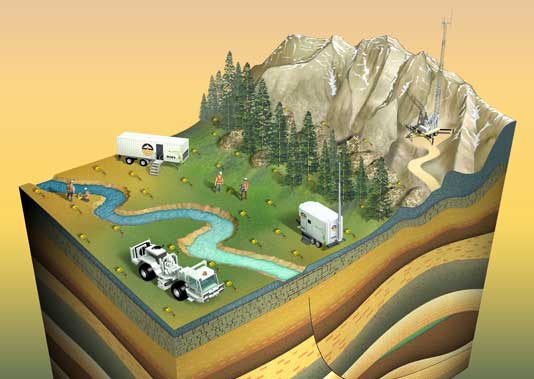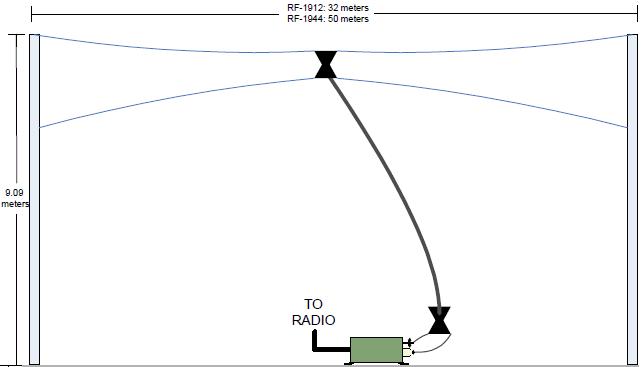This summarizes a selection of applications for the Experimental Radio Service received by the FCC during November 2010. These are related to ultra-wideband (UWB), radar, TV white space, millimeter-wave, mobile satellite terminals, UMTS, military networking, microwave interferometry, flight test telemetry, public safety, and seismic data acquisition.
Archive for the ‘Millimeter-wave’ Category
Ultra-Wideband: How Regulatory and Standardization Delays Slowed a Wireless Technology
Thursday, September 2nd, 2010The FCC recently issued an order denying reconsideration petitions in its ultra-wideband (UWB) proceeding. That effectively ends the 12-year UWB rulemaking process. Mitchell Lazarus recounts how UWB became bogged down at the FCC and in a failed standardization attempt in IEEE 802.
UWB, as authorized by the FCC, operates across 3.1 to 10.6 GHz, with very low power at any one frequency; its tendency to cause or receive interference is very low.
IEEE 802 attempted to create a UWB standard in IEEE 802.15.3a but did not, as neither of two competing proposals reached the necessary voting threshold for approval. One of the competing proposals, Multi-band Orthogonal Frequency Division Multiplexing (MB-OFDM), has since seen some consumer success in Wireless USB, which is based on a platform maintained by the WiMedia Alliance; data rates are up to 480 Mbps at a range of about 10 feet.
UWB was eventually standardized in IEEE 802.15.4a, where it exists as an alternative physical-layer to standard IEEE 802.15.4-2006, a standard for very low power, low data rate devices. (The IEEE 802.15.3 family is for higher data rates with higher power consumption.) It uses what was the other competing proposal in 802.15.3a, Direct Sequence UWB (DS-UWB). This standardized form of UWB has been commercialized for asset tracking and other location services, but not yet for consumer applications.
(more…)
Experimental Radio Applications at the FCC
Saturday, August 14th, 2010This summarizes a selection of applications for the Experimental Radio Service received by the FCC during July 2010. These are related to high-frequency data, military communications, environmental data collection, synthetic aperture radar, WiMAX, sensor networks, interference-resistant communications, LTE, rail transportation, air traffic control, white space networks, and RFID.
- Harris filed an application (with supporting exhibits) for experimental license to operate on various frequencies between 3 and 15 MHz to test an experimental high-frequency wideband waveform that is intended to operate at either 12 kHz bandwidth or 24 kHz bandwidth to allow faster data transfer via high-frequency communications.
- Harris also filed an application (with supporting exhibit) for experimental license to operate on 4.94-4.99 GHz in support of development of US Army’s Warfighter Information Network: Tactical (WIN-T) and Future Combat Systems (FCS) programs. Equipment is to consist of the HNRe2 Highband Network Radio, manufactured by Harris. Harris says the HNRe2 is comprised of four elements: 1) the Baseband Processing Unit, 2) the Highband RF Unit (HRFU), 3) an Inertial Navigation Unit (INU), and a GPS device. The HRFU further consists of an upconverter, a High-Powered Amplifier (HPA), a Switched Beam Antenna (SBA), a Low-Noise Amplifier (LNA), and a downconverter). The test network will consist of five fixed nodes and one mobile node. The FCC has asked Harris to justify extended testing in a band that is primarily allocated for non-government public safety use.
- Canon U.S.A. filed an application (with supporting exhibits) for special temporary authority to operate wireless devices in support of a private technology and product exhibition from September 1, 2010 through September 3, 2010 at the Jacob K. Javits Convention Center in New York, NY. Canon is planning to import many wireless devices from Japan to be used with displays during the exhibition. These devices are not FCC compliant and not expected to be FCC compliant until after the exhibition. Frequencies requested include 315.0-315.7 MHz, 2.40-2.50 GHz, 5.18-5.67 GHz, and 61.6-62.5 GHz. This application was granted on August 11.
Experimental Radio Applications at the FCC
Thursday, June 3rd, 2010This summarizes a selection of applications for the Experimental Radio Service received by the FCC during May 2010. These are related to WiMAX, sensors, SAW devices, radio-location, ultra-wideband, white space, aircraft passenger communications, landslide monitoring, collision avoidance radar, mobile DTV, LTE, Inmarsat handsets, highway rock-fall monitoring, HF communications, spacecraft link characterization, and interference into broadband access.
- Polytechnic Institute of NYU filed an application (with supporting exhibit) for experimental license to conduct a network research project using WiMAX on 2535-2540 MHz. This is part of the nationwide Global Environment for Network Innovations (GENI) project, a suite of infrastructure that will support experimental research in network science and engineering. GENI is supported by the National Science Foundation and managed by the GENI Project Office at BBN Technologies.
- Mnemonics, Inc. filed an application (with supporting exhibits) for experimental license to operate in support of a research project that is to develop and demonstrate the viability of wirelessly extracting measured data from a network of passive surface acoustic wave (SAW) sensor devices. This sensing technique is said to have several advantages over existing sensors, including no wired connections needed to extract data, no power requirements, operation up to 1000 degrees C., and sensor cost in-quantity in the tens of cents each. Operation will be on 915 MHz.
Experimental Radio Applications at the FCC
Monday, March 1st, 2010This summarizes a selection of applications for the Experimental Radio Service received by the FCC during February 21-26: radar, WiMAX, MVDDS, aeronautical communications, private mobile data, millimeter wave, high-frequency data, space communications, and radiolocation.
- The Maryland Department of the Environment filed an application (with supporting exhibits) to operate a wind-profiling radar on 915 MHz. The equipment was developed by the National Oceanic and Atmospheric Administration (NOAA) and fabricated by Radian International. The antenna is to consist of one steerable four-panel micro-patch phased array.
- DTV Norwich filed an application (with supporting exhibit) for special temporary authority to conduct propagation tests prior to potential full-scale deployment of Multichannel Video and Data Distribution Service (“MVDDS”) at 12.2 to 12.7 GHz in the Miami area. This is to determine the suitability of potential transmitter sites for full-scale operation, for which DTV Norwich has a license.
Experimental Radio Applications at the FCC
Sunday, February 21st, 2010This summarizes a selection of applications for the Experimental Radio Service received by the FCC during February 13-20: landslide monitoring, WiMAX, earth-station antennas, radar, military mobile data, automatic aircraft landing, psyops transmission.
- Skyport Global Communications filed an application (with supporting exhibits) to test a 55cm slot-array X-band antenna manufactured by EMS Technologies on 8218-8400 MHz. The test will be done using a satellite link between the 55cm antenna in Atlanta, Georgia and a hub in Houston, Texas using the XTAR LANT X-band satellite.
Recent Experimental Radio Filings at the FCC
Sunday, January 10th, 2010Companies request permission from the FCC to test cell phone jamming, antenna-induced interference, millimeter-wave transmission, RFID, radar, and remote-controlled streetlights.
(more…)


